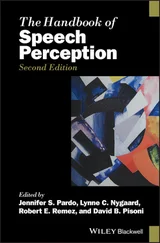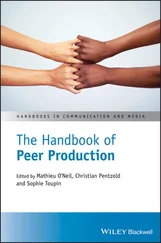However, there are individual differences in the extent to which people experience solitude as a positive state and enjoy the psychological benefits of being alone (e.g., Buchholz & Catton, 1999; Coplan et al., 2018). Research has shown that children, adolescents, and adults differ in their need to be alone (e.g., Coplan et al., 2015) and the extent to which they take pleasure in solitude (e.g., Burger, 1995; Marcoen et al., 1987) and tolerate moments of aloneness (e.g., Bowker & Raja, 2011). Recently, Coplan et al. (2019) introduced the construct of aloneliness to reflect feelings of dissatisfaction that may arise when the need for solitude is not met (i.e., when one wants to spend more time alone than the time one typically spends). Like loneliness, which reflects feelings of dissatisfaction when the need for relatedness is not met, aloneliness was also found to be associated with negative affectivity and depression (Coplan et al., 2019).
According to Winnicott (1958), the capacity to enjoy moments of solitude develops from the calm experience of being alone during infancy in the presence of the attachment figure (usually mother). The presence of what Winnicott (1958, 1963) called a good enough mother , who is reliable, responsive, and sensitive to the infant’s needs, provides a temporal and spatial place for infants to exist in a state of “ going‐on‐being.” In this state, since infants are not driven by urgent biological needs and can feel secure in the presence of mother; they can enjoy being in a restful state of mind and experience personal impulses, sensations, or feelings in a mindful and clear manner (Winnicott, 1958). If the mother reacts in an intrusive manner and does not allow her infant to reside in this resting state of aloneness, the infant cannot fully experience and recognize its impulses, sensations, and feelings as part of a comfortably developing self. Similarly, if the mother is not available or responsive when needed, the personal impulses, sensations, and feelings of restful solitude might be overwhelming for the immature infant or pushed aside by concerns about the need for parental attention. In fact, only when mothers (and other parental figures) interact with infants in a loving and nonintrusive manner, can the infants vividly and comfortably notice, enjoy, and explore their inner experiences (Tuber, 2008). Gradually, infants internalize the representation of a loving and supportive parent and become able to enjoy moments of solitude (Winnicott, 1958, 1963).
Following Winnicott’s (1958, 1963) reasoning, we suggest that the capacity to be comfortably and rewardingly alone allows a person to enjoy both a sense of enjoyable selfhood and the feeling of being closely related to loving others. In Winnicott’s (1958) terms, a person who develops the capacity to be alone is never truly alone. Rather, an internalized presence of a loving relationship partner is always available in his or her mind. Therefore, when a healthy capacity to be alone develops normally, moments of solitude activate feelings of personal value and strength by reactivating mental representations of loving and caring others. Winnicott (1958) claimed that a mature adult can use moments of solitude to regulate anxiety and restore emotional equanimity during stressful periods while relying on internalized representations of loving attachment figures. It is therefore important to distinguish between (1) being socially withdrawn and detached from others in a frightening, depressing, or deadening way and (2) having a well‐developed capacity to be comfortably alone while maintaining a close, interdependent relationship with a loving partner. It is also worthwhile to distinguish between the capacity to be alone (i.e., feeling comfortable during periods of solitude) and an affinity or preference for solitude (i.e., being intrinsically motived to actively seek out time alone).
The development of an inner sense of security (Sroufe & Waters’s, 1977, “felt security”) during interactions with a loving and responsive attachment figure is thus an important contributor to developing the capacity to be alone and enjoy solitude. As reviewed above, adults who enjoy a strong sense of attachment security tend to maintain positive representations of relationship partners and to rely on these representations both for mitigating distress and for engaging fully in relaxed and joyful exploration, play, and learning (Mikulincer & Shaver, 2016). These positive representations also allow them to enjoy solitude without being afraid of a partner’s disapproval, rejection, or intrusions. In contrast, attachment insecurities may interfere with the ability to enjoy and benefit from solitude and may foster what Goosens and colleagues called aversion to aloneness (e.g., Danneel et al., 2018; Marcoen et al., 1987).
Difficulty in enjoying solitude might be especially pronounced in people who score high in attachment anxiety, because they have an unmet desire to be very close to their relationship partner and are prone to worry or even panic when this closeness seems unavailable at a particular time. They also tend to worry that their partner might abandon them if they pay too much attention to their own wishes and needs or engage in independent activities (Hazan & Shaver, 1987; Shaver & Mikulincer, 2002). Moreover, attachment‐anxious individuals might be less accepting of their partner’s moments or periods of solitude, interpreting them as signs of inattention, rejection, or unavailability, increasing the impulse to intrude into a partner’s personal space (Lavy et al., 2013). For attachment‐avoidant people, solitude might serve as an at‐first desirable means to deactivate attachment needs and feelings, which is their main defensive maneuver (Hazan & Shaver, 1987; Shaver & Mikulincer, 2002). But this can lead to feelings of boredom and meaninglessness, which is the way avoidant people habitually feel during moments of aloneness (Tidwell et al., 1996). It might also become an excuse for sustaining psychological distance from a partner, gradually causing the relationship to fail.
Unfortunately, there has been no systematic, published research program examining links between attachment orientations and solitude. However, a recently unpublished master’s thesis conducted by the third author (Gal, 2019) provides initial evidence on these links. Gal (2019) conducted three correlational studies of married Israeli young adults in which they completed the Experiences in Close Relationships (ECR) scale (Brennan et al., 1998), tapping attachment anxiety and avoidance. They also completed scales assessing preference for solitude (e.g., Burger, 1995) and perceived benefits and threats of being alone (e.g., Segal, 1997). In addition, they completed two new brief scales assessing a participant's capacity to be alone (eight items) and difficulties with a partner’s aloneness (six items) when the two are together at home. When completing these scales, participants were instructed to focus on times when they were at home with their partner and to rate the extent to which they were capable of being alone at these times (e.g., “I find it hard to study or to work alone when my partner is at home,” “I find easy to be alone with myself and to feel peaceful and calm when my partner is at home”) and to accept the partner’s aloneness (e.g., “I find it hard when my partner decides to work or study alone when I'm at home,” “I don't like it when my partner decides to be alone with himself/herself when I'm at home”).
In addition, Gal (2019) conducted a fourth study examining the contribution of attachment orientations to participants’ cognitive and affective responses while being alone in the presence of their romantic partner during a structured laboratory session. Both partners of heterosexual couples living together independently completed the ECR scale and were invited to participate in a laboratory session in which they were asked to freely interact with each other for 10 minutes while simulating being together at home. One of the partners was randomly selected to be the “actor” and, after interacting for three minutes, he or she was privately instructed to be alone in the presence of the other partner without informing him or her about the instructions. After three minutes, the “actor” was instructed to stop what he or she was doing and return to interacting with his or her partner for another two minutes. Then, both partners completed scales describing their own experience during the aloneness period (when the “actor” was instructed to be alone) and during the reunion period (when the actor returned to interact with his or her partner).
Читать дальше




![О Генри - Справочник Гименея [The Handbook of Hymen]](/books/407356/o-genri-spravochnik-gimeneya-the-handbook-of-hymen-thumb.webp)







